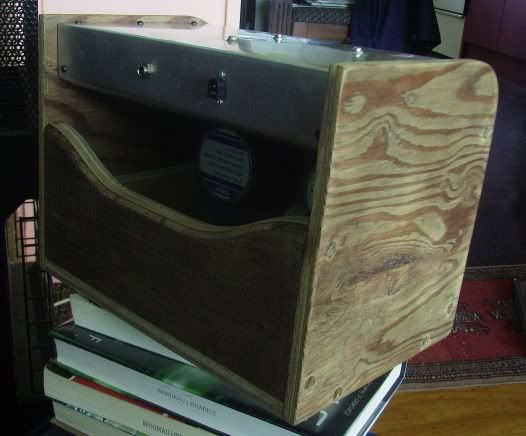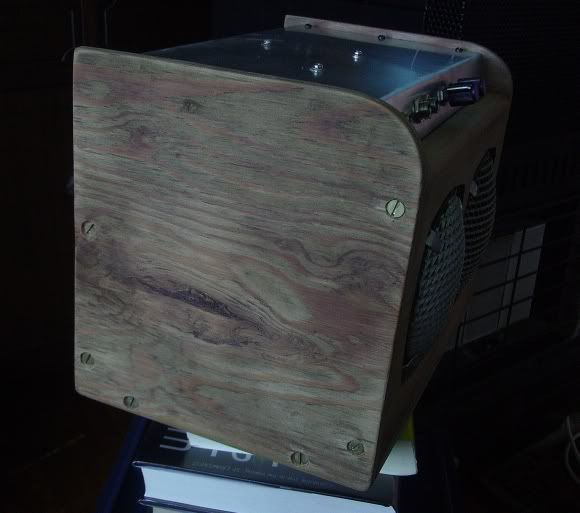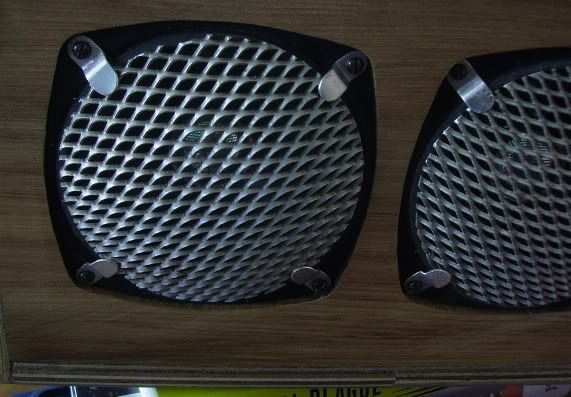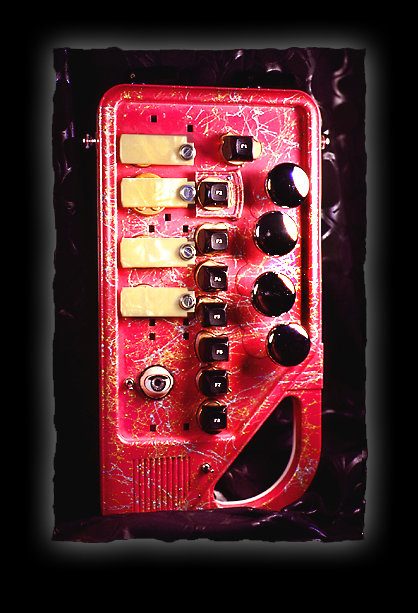Theres a coupla guys at vitamin S…, well let me start again, the vitamin S thing kind of requires, at times, using orthodox stuff for unorthodox things. That means that conventional gear hooked up to acheive relatively simple tasks can end up being rather cumbersome. Two guys at Vit S have needs of an amp at the moment, one being Tom who at the moment has a pignose amp, and has to unplug his keyboards to then play his piezo’d thumb piano… but he also wants to go busking sometimes. The other guy is Ivan who wants to move into amplification from purely acoustic with his percussion stuff but also wants to get into looping using digital loopers.
In both instances you either need a bunch of conventional gear which costs alot to be any good and can end up being rather bulky and somewhat expensive so what I’ve done, while also thinking of my own need to have a simple amp to test my own fx and instruments, is to come up with this.

It’s based on a LM386n-4 amp IC which puts out about .5- 1W of audio power. The schematic I used has been developed for bedroom guitar stuff and is called the Ruby. I added a piezo amp to it so to the far left is the 3.5mm piezo input then the 6.5mm piezo out then the Ruby in. Basically I didn’t hard wire the piezo in so an effects chain, or mixer etc, can be put between the piezo preamp out and the ruby in. If nothing is plugged into the 6.5’s then the piezo goes direct to the Ruby. What I’m going to add is a mix control, and I don’t have any idea at the moment how to do this, so that the piezo preamp can be mixed with an input into the Ruby… so as a busking amp you could play a melody instrument while also having a beat being made with the piezo… or whatever piezo’d up. Given the piezo preamp is simply a high impedance input, 10Meg, it would also work with carbon mics like those used in old CB radios and harmonica mics.

At the back it’s got a 12VAC input, I found a plugpack at the Glen Innes Sally Anne shop for 5 bucks, to power it all and to the left is a 9VDC out so FX etc can be powered up as well. Now things get tricky, not so much that the amp itself doesn’t work fine the way it is, but I realised that I could also have it all run on a 12V sealed lead acid battery so it could be used anywhere and anytime without having a wall with 230VAC in it. If I had’ve used a 12VDC plug pack then it would been easy enough to just wire up the battery off the 12V in jack and switch the earth on the input for the Ruby like any conventional Fx unit but I didn’t use DC but AC but thats alright because batteries are rechargable and the nifty thing with the pignose, and a CD player I had once, is that you can use a AC input to drive the amp, by rectifying it, or charge batteries given the right circuit between the AC and the type of rechargable battery your using. Usually it’s just rectifiction, to cut the negative going pulses, then a form of limiting so a depleted batteries low internal resistance just doesn’t suck a bunch of current and overheat and blowup! That, too, is why AC is better than DC for rechargables because the rising and falling AC current gives the batteries a little rest every 1/20th of a second at 50Hz line frequency.
Good Golly, then I decided I could also put a bigger amp in there, the speakers are 2 x 8 ohms @ 10W each, in series, so I’ve got 16 ohms @ 20W headroom for a 1W amp. The box is pretty big so I could easily fit a sealed lead acid battery and a transformer in there and use a 10 -15W car stereo IC like a TDA2030 and have a switch on the output of the Ruby to change it to a voltage amp. Basically it’s a busking 1W take anywhere thing then flick a switch and plug it into the wall for lots of watts and distortion aplenty.

I just love packing crate plywood which always seems to use the shittiest, grainiest offcuts that can be found and glued together with utter abandon… and brass woodscrews.

Does it sound any good? Actually it does, especially with the acoustic guitar when it feedbacks like a Rhino on heat, very usable sounds. It could do with a tweeter of some description because the speakers are 4″ mid/woofers so they bring in the lows and mids well enough but it’s a little lacking in the highs. Maybe one of those new age ultra fangled ribbon tweeters from jaycar. I’ve been wanting to get one to see whether they can be used as microphones.
Oh, and the alloy top rattles like crazy because its too light so I either add mass to it, the easiest option, or I rubber mount it… which might stop it but more likely just narrow the frequency band it vibrates at.
So I’m quite pleased with myself with this one and also intrigued by a bunch of design questions to take it further. Other peoples problems can be a beneficial source of inspiration.











